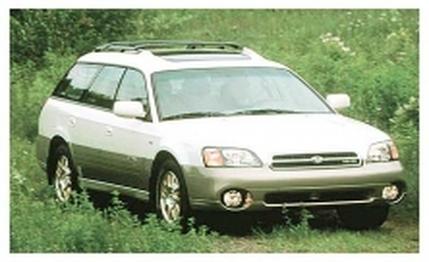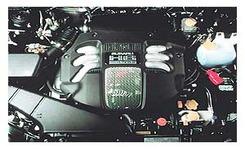
 Road Test
Road Test
In the interest of full disclosure -- as any politically correct journalist says before admitting that he's shorted the stock of the company he's set to trash or is sleeping with the wife of the politician he's about to ruin -- I must admit that I am the only U.S. car writer to have bought and paid retail for a brand-new, pearlescent-white Subaru XT6 coupe, which sat in my driveway audibly rusting for five years before I was able to unload it.
The quixotic and unloved XT6 and its successor, the SVX, were the only Subies ever to beat six to the bar, with flat-six engines that moved Subaru to advertise that they were "like Porsches." Which is much like my claiming that because I have matched pairs of arms and legs, I am like Arnold Schwarzenegger.
Times change. The era of Subaru weirdness is long gone, as dead as a BRAT, as passe as the SVX's window within a window, as forgotten as the 356cc microcar that was Subaru's unfortunate first entry into the U.S. market ($1297 took it away, top speed 50 mph). The company has gone decidedly mainstream after 32 years of making flat-four cars that thrummed like motorboats and were favored by Libertarian Vermonters and penurious grad students.
Subaru's initial success came when the company pioneered the practical all-wheel-drive small car, initially to fulfill a Japan Interior Ministry contract for an economical little on/off-roader for its forestry department. Subaru figured that it was a cinch to drive the rear axle of a longitudinally engined front-wheel-drive car with a simple driveshaft and diff rather than add a front-wheel-drive transfer case and independent front axles to a conventional rear-wheel-drive car.
More recently, the simplicity of that concept led to the Outback, the first crossover vehicle to link at least some of the capability of a truck-based SUV with the on-road comfort of a car.
When the SVX went away in 1997, Subaru was left with only a 2.5-liter DOHC flat-four to power its Legacy Outback and Forester, plus an SOHC 2.2 for the base Impreza. The larger of the two platforms, particularly, always begged for a bit more power than its 165-hp four could provide, and now Subaru has responded with a brand-new four-cam (chain-driven, to the company's credit), 3.0-liter flat-six of 212 hp and 210 pound-feet of torque.


Subaru's new H6-3.0, as it is styled, is not simply the old four with two more cylinders, which is what gave birth to my little-lamented 2.7-liter XT6 mill. The new engine's bore centers are entirely different, and Subaru has managed to stack all six cylinders onto a block less than an inch longer than the four's. Deploy a chain hoist, and it sneaks right into the standard Outback engine compartment with only the addition of a bigger radiator and a reinforced crossmember.